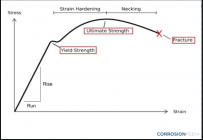moondog
Gold $$ Contributor
I've had a Bench Source Annealing macine for about 7 years. I do it every time I shoot.
Easy enough to do. I will say after experimenting, my groups changed if I waited till the 3rd firing. Neck tension will change. Once you get comfortable with it, it's just one short extra step in the reloading process. Get the Templaq and follow the directions. Keep a few extra worn out cases to set it up. Keep the flame tip length the same each time. I find shorter flame works better than cranking it up.
Easy enough to do. I will say after experimenting, my groups changed if I waited till the 3rd firing. Neck tension will change. Once you get comfortable with it, it's just one short extra step in the reloading process. Get the Templaq and follow the directions. Keep a few extra worn out cases to set it up. Keep the flame tip length the same each time. I find shorter flame works better than cranking it up.











